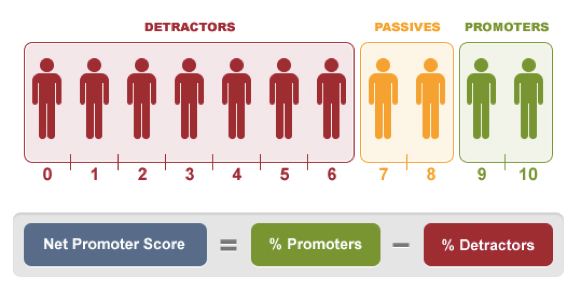eNPS Scores
How to measure and improve employee advocacy and engagement?
We have seen many different reactions when it comes to the employee Net Promoter Score (eNPS).
"Oh, that ultimate question!"
"Huh? What is eNPS?"
If you are not familiar with eNPS, let us explain it to you. The employee Net Promoter Score (eNPS) is a concept that builds off the NPS. It allows companies to measure and get a quick easy snapshot of employee advocacy within their company.
IN-HOUSE COUNTERPART TO NPS
The very original metric is the NPS. NPS is short for Net Promoter Score. Originally developed by Fred Reichheld, Bain & Co, and Satmetrix. It is measured based on a single "ultimate" question: “How likely are you to recommend (our company) to friends and family?
eNPS is built in the same way with a slight tweak to the question: How likely are you to recommend (company) as a place to work with friends or family?

HOW IS THE ENPS CALCULATED
In conformity with the NPS, the scale is 0 to 10, and responses are divided into three categories:

WHAT IS A GOOD SCORE
An eNPS score can range from -100 to 100. A positive score is usually considered a good score. If your eNPS is positive, it means that you have more promoters than detractors, which is a great thing! We all know that employees who are willing to promote the company to others would only do so if they are more engaged and like the organisation, so that would also mean that they would go the extra mile, stay longer with you tend to be more productive. If you have a score between 10 to 30, you should be very proud of yourself.
Tip: You’ll want to find out how well you’re doing to use to attract and retaining amazing talent.
OK, I HAVE A SCORE. HOW CAN I USE IT?
-
Ask a follow-up "why" question: The real value comes in the follow-up question of “why”. You can ask something like: "What’s the reason for the score you gave?" Basically, anything that lets you dive deeper to find out what contributes to the current state and what could be improved.
-
Share the result with employees: Transparency is always highly encouraged because you'd want employees to feel involved in improving eNPS. The more your employees feel responsible, the higher the chances of increasing their engagement.
-
Track it continuously: The biggest benefit of the eNPS is that it is a quick way to get an overview of employee advocacy and engagement. To reap the most out of eNPS, it should be a metric that is measured over time as it allows the understanding of different factors that may affect employees over e.g. a year.
-
Benchmark against yourself: Very often, many will want to benchmark themselves against their competitors or other companies within the industry, but benchmarking against other companies isn’t the best way to do it. Instead, you should be benchmarking against yourself. Ask yourself what you can improve internally so that your employees are more likely to be advocates and will be willing to go the extra mile for your customers. At the end of the day, the most useful benchmark a company can use is its own progress over time.
By using the eNPS question alone, a company can get a quick overview which may be a good start. However, more comprehensive surveys are required to go deeper into understanding employee motivation and potential problem areas. At EngageRocket, the eNPS question forms part of the standard engagement questions to give a company a holistic picture of its organisational health.
For any questions, send an email to our responsive support team at support@engagerocket.co We're here to assist you every step of the way!